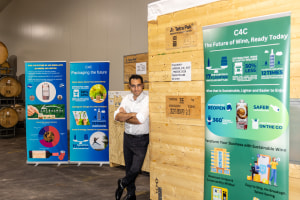Australia’s national science agency, CSIRO, has launched a national isotope database, set to support the verification of sustainability and provenance claims for Australian food.
Isotopes are the various forms an element can take, differentiated by mass. Isotopic data can be used to identify where key food commodities were grown, as well as the amount of water or carbon emissions that were part of production.
CSIRO has put together a national database, drawing from Australia’s leading research agencies to create an open-access resource. Isotopes.au consolidates isotopic data, which can be used by regulators and industry to verify a food’s provenance and sustainability claims and ensure compliance with trade regulations.
CSIRO lead scientist, Dr Nina Welti, said Isotopes.au could underpin the development of sustainability standards for Australia’s $80 billion agriculture and food export industry.
“Customers increasingly want to know where and how their food was sourced so they can make ethical and more sustainable choices,” said Welti.
“Isotopes are unique chemical ‘fingerprints’ that imprint clues of a product’s origin, as well as the inputs that went into production, and environmental factors like soil nutrients and groundwater flows.
“This is just the beginning of capturing Australia’s wealth of isotopic data into one place – Isotopes.au – to help industries demonstrate how they’re meeting environmental targets for greater transparency with trading partners and consumers.”
The database was developed by CSIRO in partnership with Geoscience Australia, the Australian Nuclear Science and Technology Organisation (ANSTO), and the National Measurement Institute, with co-investment from the Australian Research Data Commons (ARDC). It currently contains over half a million records.
Isotopes.au will continue to be expanded to include more data, broadening beyond land-based measurements. For instance, the fisheries and aquaculture industry will be able to use the resource to track marine products through the supply chain.
It could also support the development of food circularity in production systems by underpinning safety standards for food reuse.
The interactive site can be explored here.






